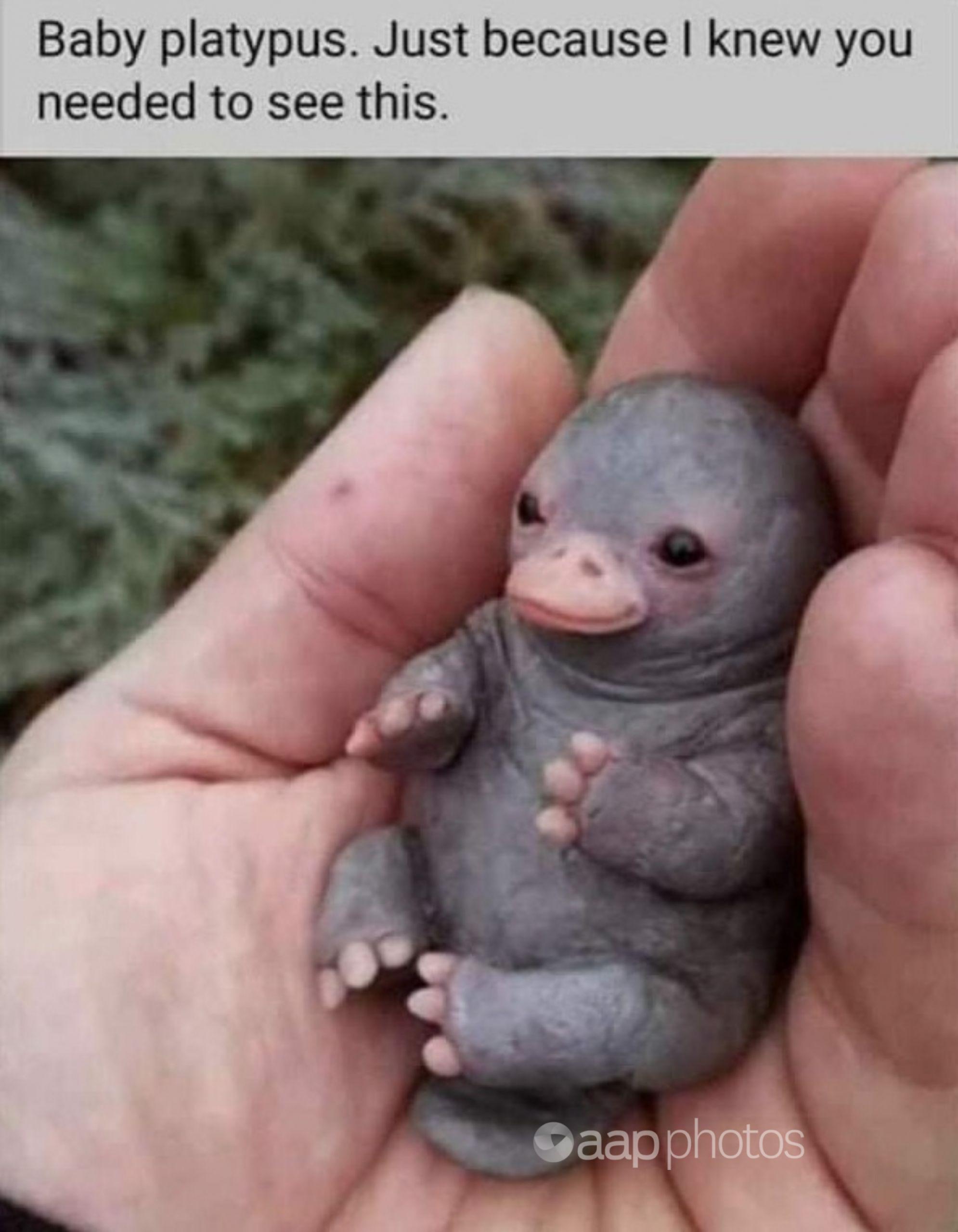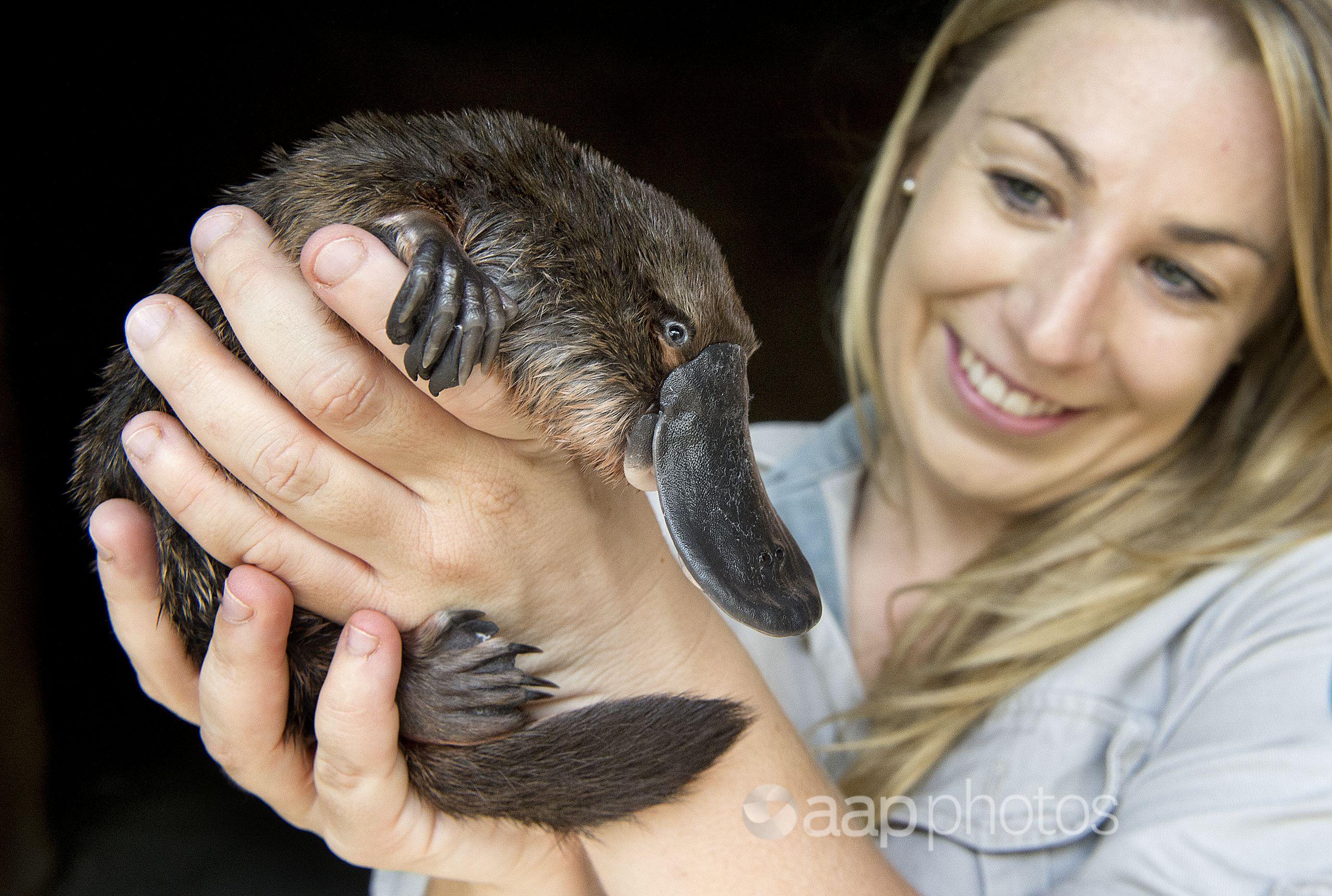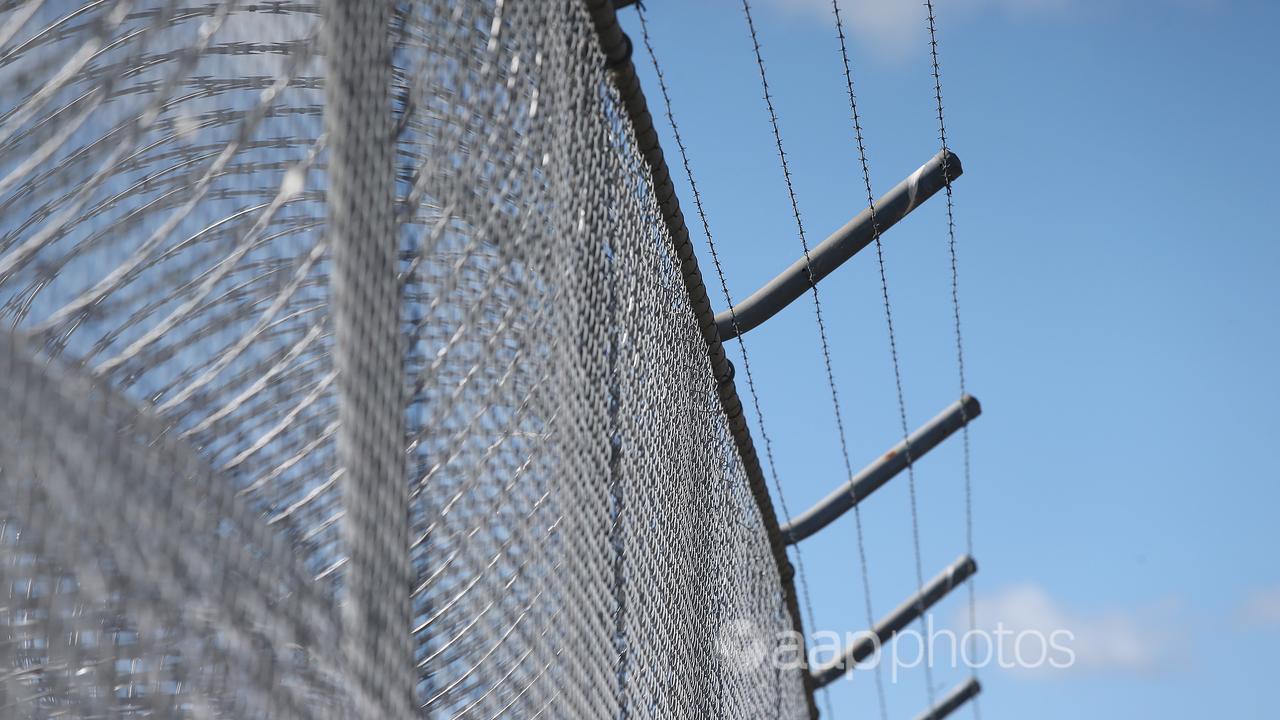The Statement
A viral image of a purported baby platypus being cradled in the palm of a human hand has been shared by a Facebook user in Christchurch, New Zealand.
The February 19 post, from a self-proclaimed student of “quantum healing hypnosis therapy”, includes the text: “Baby platypus. Just because I knew you needed to see this.”
At the time of publication, the post had been shared more than 250 times, drawing 400 engagements and more than 18,000 views. Other versions of the post have been shared thousands of times, see examples here and here.

The Analysis
The platypus is a duck-billed animal only found in Australia. It belongs to a group of mammals called monotremes, of which the echidna is the only other member.
While the animals are unique – so much so that some European naturalists first thought they were a hoax – baby platypuses bear little resemblance to the palm-sized figurine in the post, which is a sculpture.
Platypuses live in a range of freshwater systems, from rainforests in Queensland to the Tasmanian highlands. Monotremes are the only mammals known to lay eggs; after hatching, young platypuses appear pink and hairless, but still with pronounced bills (see video, mark 1min 25sec).
They spend several months living in burrows before emerging into the wild, at which point they closely resemble their adult brethren with fur-covered bodies and webbed feet (see examples here, here and here), unlike the figurine in the posts.
The creator of the purported baby platypus has been identified as “fantasy artist” Vladimir Matić-Kuriljov, who writes of the sculpture on his Artstation page: “Sculpted in Super Sculpey, painted with acrylics. Probably the cutest thing I ever made.” Archived versions of the page suggest the listing was made in mid-2019.
The photo is also posted on the artist’s Instagram account, dated November 7, 2019. The artist includes several photos of his sculpture along with a drawing showing a similar figure. In a higher resolution photo of the sculpture, it is possible to see the marks from the clay modelling knife on its ‘skin’.
In February 2020, the image began to go viral, with several widely shared posts describing it as a baby platypus, for example here, despite the suggestion being repeatedly debunked (see here, here and here).
While Matić-Kuriljov did not respond to AAP FactCheck, he previously told IFLScience that he had in mind “an invented fantasy species of ‘stone platypus'” when he created the work, adding: “I never considered how it might be misinterpreted.”
Cesar Australia senior wildlife ecologist Josh Griffiths, whose specialty species is the platypus, told AAP FactCheck there were a number of reasons why the figurine in the image was clearly not a baby platypus.
“We don’t see platypuses at this age – they are still confined to their maternal burrow,” he said.
“By the time they emerge from the burrow at around three months old, they look like adult platypus but slightly smaller.”
Griffiths noted that the figurine also had legs and feet that “resemble a dinosaur”, a human-like head that faced forward and “large eye’s like a child’s toy”, all unlike a real baby platypus. The figurine also appeared to be smiling, he added.

The Verdict
The post’s image doesn’t depict a baby platypus as claimed. Rather, it is an artist’s creation representing a fictional species, which is clearly discernible from a real platypus.
False – Content that has no basis in fact.
AAP FactCheck is an accredited member of the International Fact-Checking Network. To keep up with our latest fact checks, follow us on Facebook and Twitter.
All information, text and images included on the AAP Websites is for personal use only and may not be re-written, copied, re-sold or re-distributed, framed, linked, shared onto social media or otherwise used whether for compensation of any kind or not, unless you have the prior written permission of AAP. For more information, please refer to our standard terms and conditions.

















